#jeanne de hainaut
Explore tagged Tumblr posts
Photo

Joanna of Constantinople and her husband Thomas of Savoy by Edmond de Busscher.
The eldest daughter of Emperor Baldwin of Constantinople and Mary of Champagne, her parents died in the Crusades in 1205. She was raised in Paris under the guardianship of King Philip Augustus, who married her to Ferrand of Portugal in 1212. The latter soon turned against his French suzerain, provoking a war that ended in the defeat of Bouvines and the imprisonment of the young count. Jeanne then governs Flanders and Hainaut alone. She had to face the rivalry of her sister Marguerite, then the sedition of her counties led by an impostor who claimed to be her father. At the end of this civil war, her husband Ferrand is released, but dies shortly afterwards. She married Thomas of Savoy in her second marriage.
#edmond de busscher#kingdom of belgium#comtes de flandre#comtesse de flandre#jeanne de constantinople#jeanne de hainaut#jeanne de flandre#countess of flanders#county of flanders#comté de flandre#full length portrait#full-lenght portrait
8 notes
·
View notes
Text

Musée de l'Hospice Comtesse, ancien hôpital fondé par Jeanne de Hainaut ou de Constantinople, Comtesse de Flandre (1237), Lille, octobre 2024.
5 notes
·
View notes
Text
The Life Course of Women- Aristocratic Women of Champagne and Marriage.
It is difficult to determine when most well-born girls left the parental household. A few marriage contracts of girls betrothed at very young ages required them to he raised in the households of their prospective husbands in anticipation of marriage. Alix of Grandpré was about two when placed in the Joinville household, where she spent ten years before marrying fifteen-year-old Jean of Joinville in 1240. Jeanne of Champagne was the same age when betrothed to one of Philip III's sons and deposited at the royal court until, nine years later, she married the future Philip IV, then fifteen. Both couples were raised virtually as brother and sister, both appeared to have delayed cohabitation after marriage until the wives reached their late teens, and both had very close marriages. Jean of Joinville remembered Alix* after their twenty-seven-year marriage as " my dear companion Alix " and endowed eternally burning candles next to her tomb. Philip IV, similarly affected byJeanne 's death after twenty-one years of marriage, commemorated her in numerous benefactions.
The surrender of young girls in anticipation of marriage was known to carry risk. Alix of Grandpré's mother tried to protect her by inserting a clause in the marriage contract requiring Alix 's return to her or her brother if the marriage did not occur. Thibaut IV refused to hand over his two-year old daugther Blanche until her prospective husband, the son of Odo II of Burgundy, turned fourteen and was capable of giving a canonically valid consent to marriage; at that time, said the count, he would deliver his daughter. The count's caution was justified, for the young man later refused his consent. Thibaut had contracted to deliver his daughter for a certain marriage, not a possible one, and so young Blanche remained at home until, at twelve, she married Jean, the future count of Brittany (1239-1305). Even then, Thibaut took the precaution of depositing with the monks at Preuilly the two key documents pertaining to Blanche's marriage: the papal bull of dispensation for consanguinity, and the dower letter sealed by the groom's father. Margaret of Dampierre, too, refused to hand over her daughter for marriage until a dower had been assigned, in effect, until her daughter had been made a legitimate wife by dower. The absence of clauses in marriage contracts specifying the early delivery of betrothed girls suggests that most well-born girls remained with their natal families until marriage or entry into a convent. That is why so many daughters appear with their parents in the records of property transactions, first as silent witnesses, then as formal consenters to the acts of their parents.
It is not known how many girls entered convents or at what ages, although it appears that they generally did so in their teens, at about the age of marriage. For girls to be married, marriage contracts often tied the date of marriage to their nubility, without however explaining whether nubility was defined as a physical state or as the age of a canonically valid marriage. Gislebert of Mons reports that the proposed marriage between Henry I's daughter Marie and the young Baldwin of Hainaut would occur when both reached "a marriageable age" (ad annos nubile), without further explanation. Other contracts speak of etas in the sense of either physical state or chronological age. Jeanne of Champagne's marriage contract with the future Philippe IV uses etas in both senses: the couple will give their consent "when they reach the minimum age (in etate sufficienti) for contracting a betrothal" and will marry "when Jeanne attains a marriageable state (ad nubilem etatem)". Whether Jeanne was nubile when she married nine years later, in the middle of her eleventh year, is uncertain, for she had her first child five years later at sixteen. Ultimately, the date of her marriage had less to do with her physical state than with Philippe III's need for his son's marriage as soon as possible.
Of the seven countesses of Champagne who married between 1164 and 1270, one married at thirteen, two at fifteen or sixteen, two at eighteen or nineteen, and two at twenty, for a median age of about eighteen at first marriage. The best documented cases of aristocratic women yield a similar pattern: a few married as early as twelve, but most married in their mid-teens. Marie of Montmirail, Emeline of Broyes, Jeanne of Dampierre, and Alix of Grandpré were married by fourteen or fifteen. Simon of Joinville's eldest daughter Elisabeth married in her late teens, while Agnès of Choiseul and Agnès of Bar-le-Duc married in their early twenties. Even desirable heiresses were not necessarily married off at the minimum age. Petronilla of Bar-sur-Seine was eighteen when her guardian uncle married her to Hugh of Le Puiset and surrendered custody of her inheritance. Agathe of Pierrefonds, heiress after her brother's death, married Conon, count of Soissons, at about nineteen while still under her mother's custody. That was the same age that Marie of France married Henry the Liberal, after spending ten years in the Benedictine convent of Avenay being educated and acculturated under the tutelage of a magistra, Alix of Mareuil. Henry, at thirty-seven, had waited more than twelve years after betrothing Marie. These examples suggest that it was not the minimum canonical age of marriage that determined when a well-born woman first married but rather her family's sense of her readiness for marriage and the availability of a suitable husband.
Indirect evidence suggests that the girls who married at a very young age often delayed cohabitation after marriage. The butler Anselm II of Traînel apparently left his bride in her father's custody out of respect for her tender age, a deferral that cost him both his wife and her dowry. Alix of Grandpré, who was betrothed as an infant and spent ten years in the Joinville household before marrying Jean of Joinville at about twelve, apparently did not begin to cohabit with him until she was seventeen, after five years of marriage; that was the year that Jean turned twenty-one and was knighted, and his widowed mother Béatrice left Joinville castle. Alix had her first child two years later at about nineteen and her second at twenty. Even Countess Jeanne seems to have delayed cohabiting with Philip IV after their marriage in 1284; she had resided at the royal court since infancy, married at eleven, but had her first child at sixteen.
Theodore Evergates- The Aristocracy in the County of Champagne, 1100-1300
* I think Joinville said "my dear companion Alix" about his second wife Alix de Reynel, as reported by Evergates earlier in the book.

(Seal of Jeanne de Navarre, Countess of Champagne and of Brie, Queen of Navarre, and Queen consort of France.)
#xii#xiii#theodore evergates#the aristocracy in the county of champagne 1100-1300#alix de grandpré#jean de joinville#jeanne i de navarre#philippe iii#philippe iv#thibaut iv de champagne#blanche de champagne navarre#jean i de bretagne#marguerite de dampierre#henri i de champagne#marie de champagne#baudouin vi de hainaut#marie de montmirail#émeline de broyes#jeanne de dampierre#simon de joinville#élisabeth de joinville#agnès de choiseul#agnès de bar-le-duc#pétronille de bar-sur-seine#hugues du puiset#agathe de pierrefonds#marie de france#alix de mareuil#béatrice d'auxonne
14 notes
·
View notes
Text
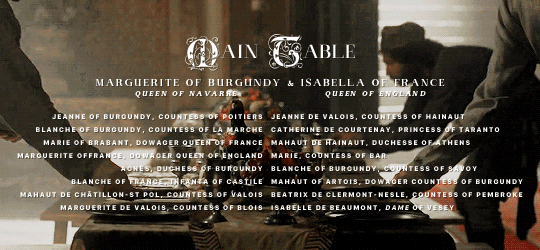


The ladies-only banquet was one of many events organized in the days that immediately followed the ceremony held on June, 5th 1313, where the three sons of the King of France Philippe IV, along with some 200 noble young men from the most prestigious families in the kingdom, were officially knighted.
At the second table, were seated: Yolande of Dreux, Dowager Duchess of Brittany, her sister-in-law Pernelle de Sully, the Dowager Countess of Dreux, her mother Marguerite de Beaumez, Blanche of Brittany, sister of Mahaut of Artois, Jeanne of and Marie of Artois, her daughters, Isabelle de Rumigny, Dowager Duchess of Lorraine, Elisabeth of Austria, Duchess of Lorraine and daughter of Emperor Albert I; the cousins of Marguerite of Burgundy Marie of Hainaut, Jeanne d'Argies, Countess of Soissons, perhaps Béatrice, Princess of Hungary and Dauphine of Viennois, Marie of Flander, Countess of Boulogne, Isabelle of Lorraine, Countess of Vaudémont, Agnès de Brienne, Countess of Joigny, her daughter Jeanne of Joigny, Eleonore of Savoy, Countess of Forez, Louise de Beaumetz, Countess of Sancerre, Marie, Countess of Roussis, Jeanne de Gîgne, Countess of Eu, perhaps Béatrice of Burgundy, Dowager Countess of La Marche, Marguerite of Burgundy's aunt, Isabeau de Coucy, sister of Mahaut de Châtillon-Saint Pol; the ladies of Jeanne of Burgundy: Alix de Joinville, lady of Beaufort, wife of John of Lancaster, Alix de Clermont-Nesle, lady of Nesle, Jeanne de Tancarville, Vicountess of Melun, Isabelle de Forez, wife of the governor of Lyon, Jeanne de Dampierre, Jeanne de Vendôme.
A third table was counting at least: Marie de Vaucemain, lady of Chey, a lady of Marguerite's, Alips de Mons, wife of Enguerrand de Marigny, Roberte de Beaumetz, her daughter-in-law and a cousin of the Countess of Sancerre, Jeanne de Machot, lady of Viarmes, daughter of Saint Louis' chamberlain and the wife of Philippe IV's chamberlain, Marguerite des Bars, wife of another chamberlain of Philippe IV's, Isabeau of Burgundy, wife of a chamberlain of Louis, King of Navarre, Isabeau de Rosny, her mother-in-law, Marguerite de la Roüe, Jeanne de Courpalay and Béatrix, widow of Nogaret. Wives of other clerks were also in attendance, potentially along female members of the bourgeoisie. — Gaëlle Audéont, Philippe le Bel et l'Affaire des Brus, 1314
320 notes
·
View notes
Photo

Art of the Day: Leaf from a Book of Hours: a Funeral Service

In the margins of this page are hybrid Franciscan and Dominican nuns, clerics, a Franciscan seated opposite a nun, and a dog pursuing a hare. This Book of Hours was created in northeastern France in the early fourteenth century, possibly for the marriage of Louis I of Châtillon (d. 1346) and Jeanne of Hainaut, as the Châtillon de Blois arms are depicted on fols. 19r and 81v, and the arms of Hainaut also appear in the borders, including in conjunction with the Châtillon arms on fol. 19r. The manuscript is exceptional for the abundance of drolleries and lively hybrids that inhabit nearly every page. Stylistically these images have been linked to a workshop in the Artois region, possibly based in Arras, and related manuscripts were traced by Carl Nordenfalk in his 1979 publication. Although the manuscript is incomplete, lacking its calendar and likely some images, its surviving illumination provides an excellent example of the playfulness of art during this period. Learn more about this object in our art site: http://bit.ly/2TYlcXJ
23 notes
·
View notes
Photo
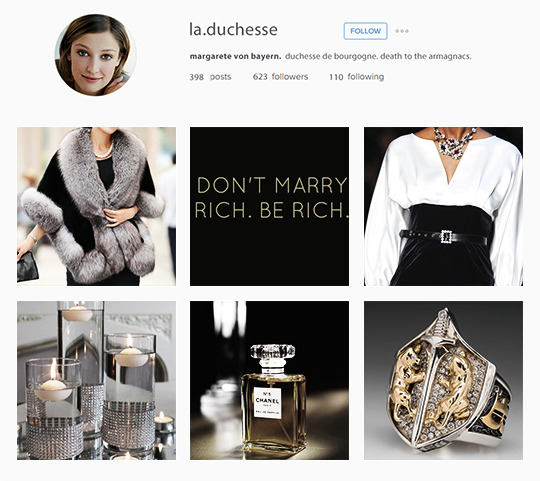
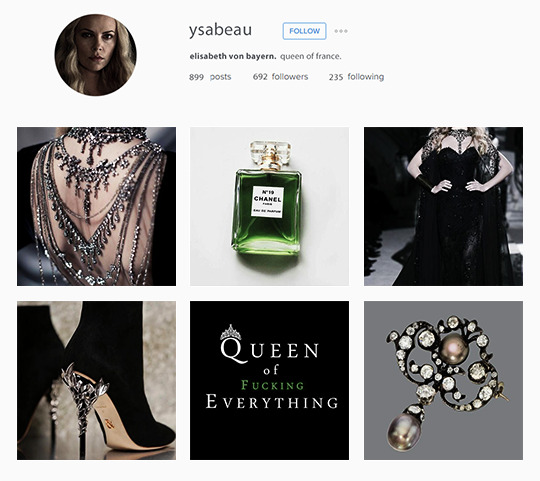
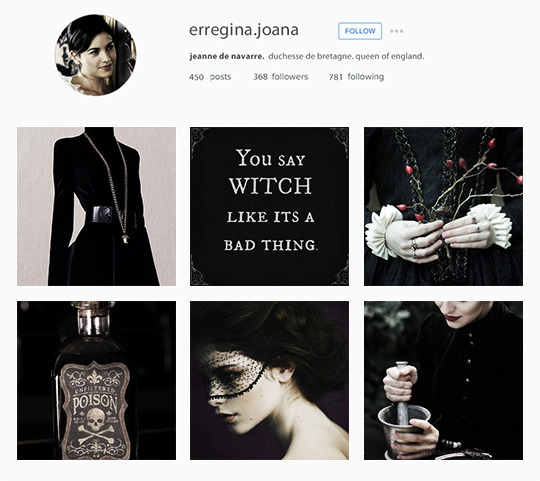




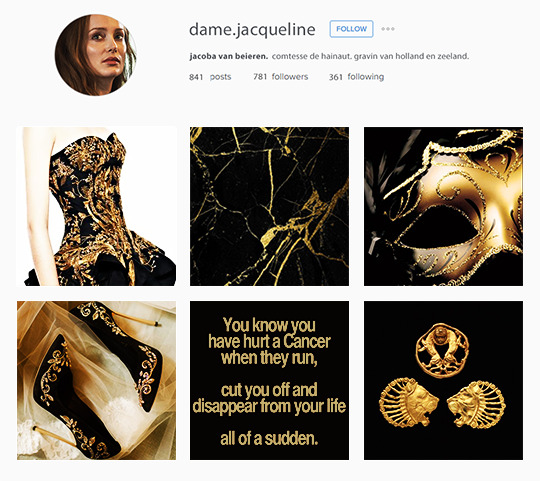
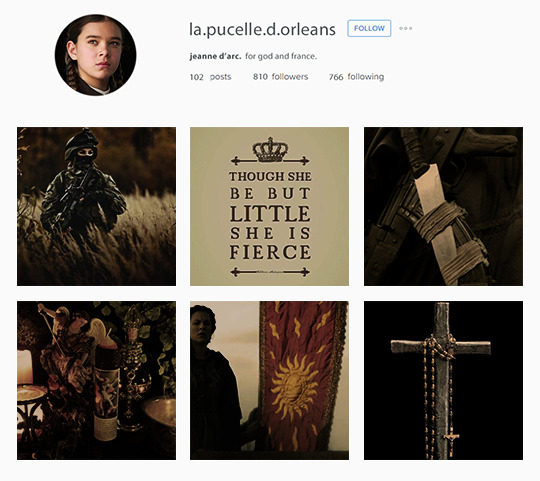
Fake Instagram || modern women of the hundred years war, part III
Margarete von Bayern: Wife of Jehan sans-Peur, duc de Bourgogne. Mother of Marguerite, Marie, Isabelle, Philippe le Bon, Catherine, Anne, and Agnès de Bourgogne. Daughter of Albrecht I. von Straubing-Holland and Margarete von Liegnitz-Brieg.
Elisabeth von Bayern: Wife of Charles VI de France. Mother of Isabelle, Louis, Jehan, Charles VII, and Catherine de France. Daughter of Stephan III, Herzog von Bayern-Ingolstadt and Taddea Visconti.
Joana Nafarroakoa: Wife of Yann IV, duc de Bretagne and Henry IV of England. Mother of Yann V, Mari, Arzhur, and Richard de Bretagne. Daughter of Karlos II.a Nafarroakoa and Jehanne de France.
Valentina Visconti: Wife of Louis, duc d’Orléans. Mother of Charles, duc d'Orléans; Philippe, comte de Vertus, Jehan, comte d’Angoulême; and Marguerite, comtesse de Vertus. Daughter of Gian Galeazzo Visconti and Isabelle de France.
Antoineta de Torena: Wife of Jean II Le Meingre, maréchal Boucicaut. Daughter of Raimond Loís Rogier, vescomte de Torena and Maria d’Auvèrnha, comtesse de Boulogne.
Violant d’Aragó: Wife of Louis II, duc d’Anjou. Mother of Louis III d’Anjou, Marie d’Anjou, René de Naples, and Charles, comte du Maine. Daughter of Joan I de Catalunya-Aragó and Yolande de Bar.
Catherine de France: Daughter of Charles VI de France and Elisabeth von Bayern. Wife of Henry V of England. Mother of Henry VI of England; Edmund Tudor, Earl of Richmond; and Jasper Tudor, Duke of Bedford.
Jacoba van Beieren: Daughter of Wilhelm II. von Bayern-Straubing, comte de Hainaut and Marguerite de Bourgogne. Wife of Jehan de France, dauphin du Viennois; Jehan IV, duc de Brabant; Humphrey, duke of Gloucester; and Frank van Borssele.
Jeanne d’Arc: La Pucelle d’Orléans.
#fake instagram#hundred years' war#medieval#english history#french history#dutch history#european history#women's history#history#nanshe's graphics
32 notes
·
View notes
Text
Chauffagiste
Pour nos chantiers dans le Hainaut nous sommes à la recherché d’un (h/f) Chauffagiste vous avez une expérience dans les grosses installations industrielles vous détectez et solutionnez les pannes aux installations de chauffage central vous assurez les dépannages et entretiens des équipements de chauffage vous exécutez des petits travaux d’installation vous assurez en complément des interventions dans les domaines HVAC, électricité, et sanitaire vous serez amené à travailler de manière autonome vous occuperez des rôles de garde et de séquence vous êtes en charge de la rédaction des rapport d’intervention
vous avez une expérience en grosses installations industrielles vous avez une formation d’électromécanicien avec une spécialisation en combustionvous avez des connaissances en brûleur gaz et mazout vous disposez aussi de bonnes connaissances en électricité vous êtes en possession du G1 G2 BA4 BA5 et VCA le cedicol est un atout vous êtes en disposition d’un permis de conduire B vous portez une attention particulière à la sécurité
Votre personne de contact RH
Villers Jeanne – +32 2 519 36 72 ou [email protected]
Lieu de travail: Hainaut
Chez ENGIE Cofely, vous intégrez un environnement de travail passionnant et varié, où diverses techniques entrent en jeu. Vous gérez vous-même vos clients et leurs chantiers dans votre région et vous êtes formé(e) aux technologies les plus récentes. Dans votre fonction, vous alliez un travail d’équipe intensif à une grande autonomie. Votre package salarial est assorti d’avantages extralégaux intéressants comme des chèques-repas, une assurance-groupe et hospitalisation et 15 jours de RTT.
http://bit.ly/2F3VsFI
0 notes
Text


"Cuisine" du Musée de l'Hospice Comtesse, ancien hôpital fondé par Jeanne de Hainaut ou de Constantinople, Comtesse de Flandre (1237), Lille, octobre 2024.
3 notes
·
View notes
Text

"Leçon de Pharmacie" anonyme représentant huit Augustines dans l'apothicairerie de l'Hôpital de Seclin (1815) présentée dans la reconstitution de la pharmacie (XVIIIe-XIXe siècles) au Musée de l'Hospice Comtesse, ancien hôpital fondé par Jeanne de Hainaut ou de Constantinople, Comtesse de Flandre (1237), Lille, octobre 2024.
3 notes
·
View notes
Text

"La Présentation de la Vierge au Temple" d'Arnould de Vuez (1642-1720) dans la "Chapelle" (1649) du Musée de l'Hospice Comtesse, ancien hôpital fondé par Jeanne de Hainaut ou de Constantinople, Comtesse de Flandre (1237), Lille, octobre 2024.
2 notes
·
View notes
Text

Musée de l'Hospice Comtesse, ancien hôpital fondé par Jeanne de Hainaut ou de Constantinople, Comtesse de Flandre (1237), Lille, octobre 2024.
2 notes
·
View notes
Text

"Corbeau" en chêne (XV-XVIIe siècles) au Musée de l'Hospice Comtesse, ancien hôpital fondé par Jeanne de Hainaut ou de Constantinople, Comtesse de Flandre (1237), Lille, octobre 2024.
2 notes
·
View notes
Text

"Portrait du Duc de Boufflers" par Jean-Marc Nattier (XVIIIe siècle) au Musée de l'Hospice Comtesse, ancien hôpital fondé par Jeanne de Hainaut ou de Constantinople, Comtesse de Flandre (1237), Lille, octobre 2024.
#expos#peinture#XVIIIe siècle#Boufflers#Nattier#MuseeHospiceComtesse#HospiceComtesse#LilleTourcoingRoubaix
2 notes
·
View notes
Text

"Têtes de Méduse" issues du Bureau des Finances de Lille (1691) au Musée de l'Hospice Comtesse, ancien hôpital fondé par Jeanne de Hainaut ou de Constantinople, Comtesse de Flandre (1237), Lille, octobre 2024.
1 note
·
View note
Text

Musée de l'Hospice Comtesse, ancien hôpital fondé par Jeanne de Hainaut ou de Constantinople, Comtesse de Flandre (1237), Lille, octobre 2024.
0 notes
Text

Musée de l'Hospice Comtesse, ancien hôpital fondé par Jeanne de Hainaut ou de Constantinople, Comtesse de Flandre (1237), Lille, octobre 2024.
1 note
·
View note